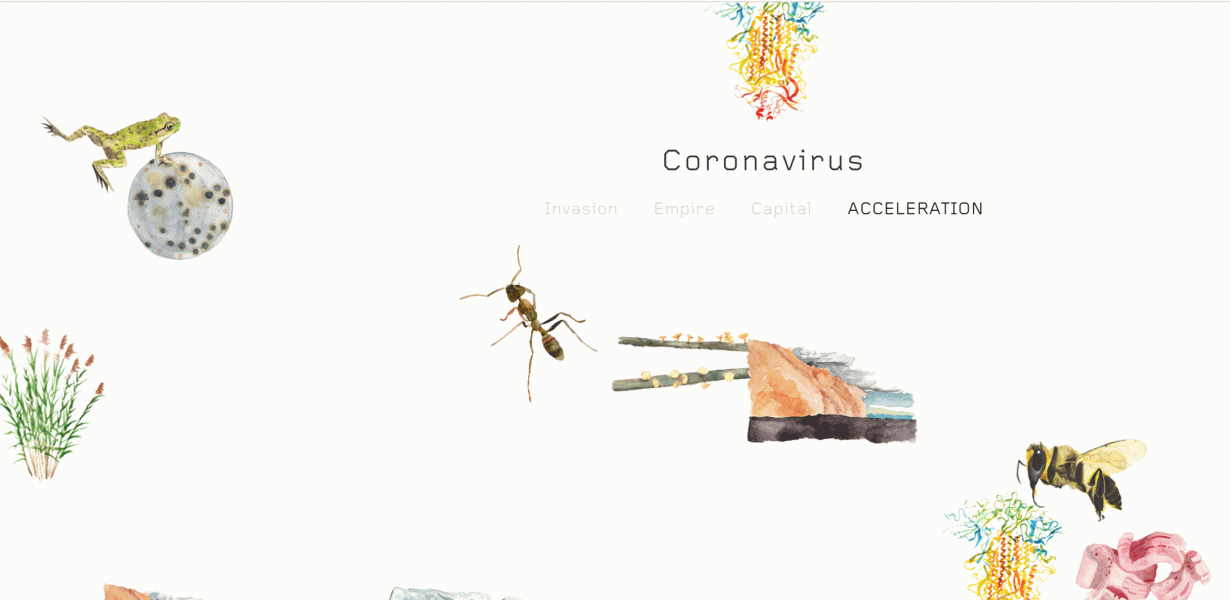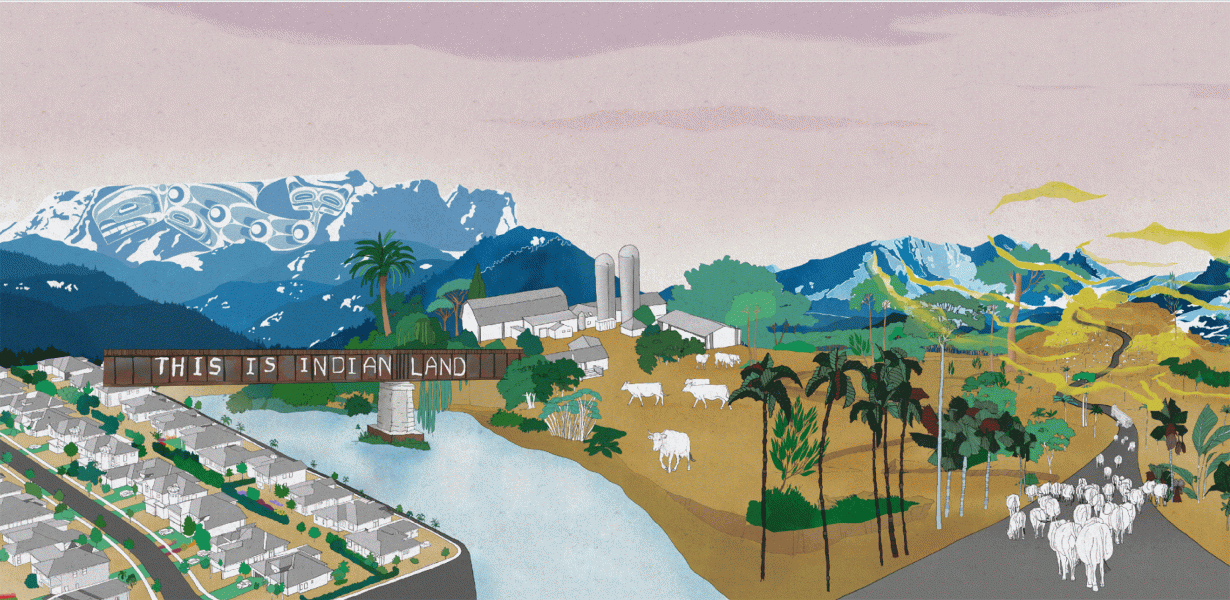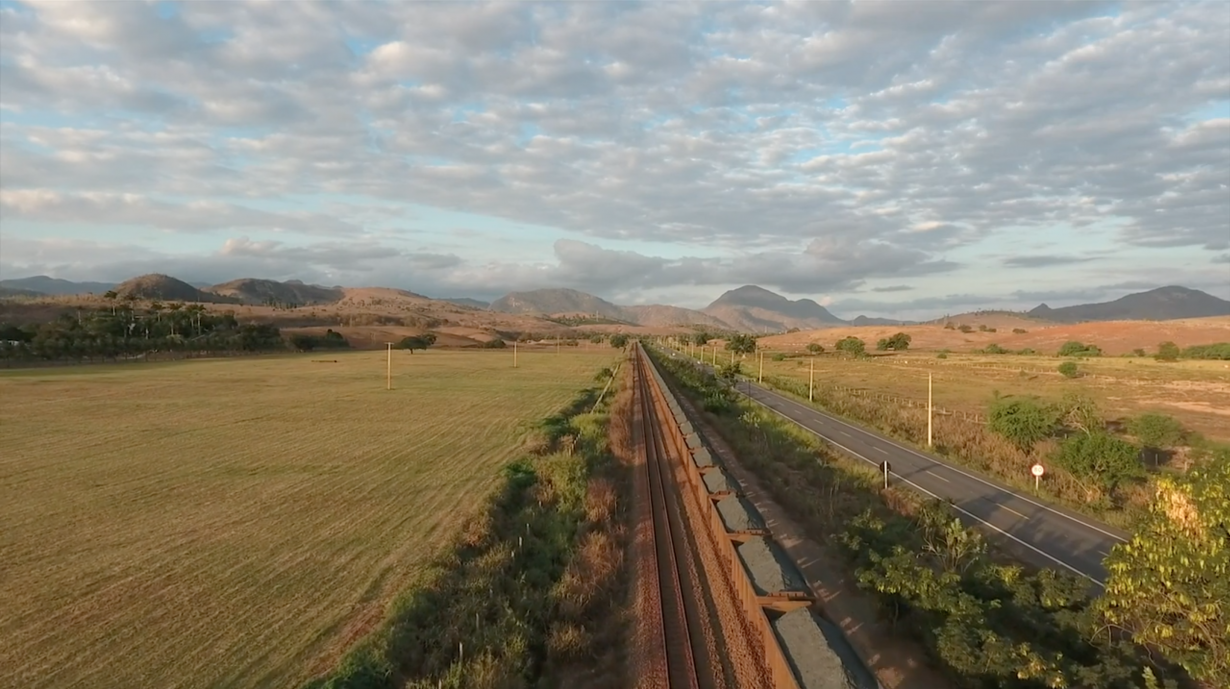Poetic, playful and political – the anthropology-art collective charts the Anthropocene
If you are locked down and want to see art, 2020 was probably marked by time spent in online viewing rooms of various types or scrolling through the glorified PDFs that constitute online art exhibitions. None of which come close to the physical experience of the real thing. On the one hand, that’s good, a validation of IRL experiences. On the other hand, it leaves something of a hole that would normally have been filled by the intelligence and ambition of a good exhibition. But that’s a hole that Feral Atlas, which launched in online form last October, can fill.

Since my first visit I have found myself continually wandering back into it, unsure of what I am looking for, but nevertheless drawn to this unusual exploratory tool. Poetic, playful and political, it reveals itself to the curious reader as a singular new roadmap through what we now call the Anthropocene: the disputed term used to describe our current geological era, in which human activity has become the most significant force for change (generally not of the good type) in our planet’s climate and ecosystems.
On the homepage, watercolour drawings of various natural entities float across the white background (like specimens waiting for a microscope), identifying themselves each time my cursor hovers over them: toxic fogs, radioactive blueberries, salmon pests, underwater noise… These are examples of the ‘feral entities’ the atlas was constructed to bring to light: participants in ecologies that have been influenced or engendered by human-built infrastructures, but which have subsequently developed and spread beyond human control. These are the intertwined human–nonhuman relationships that form the Anthropocene. Each is an entry point into the meandering experience of the atlas.

Feral Atlas is a collaborative endeavour curated by anthropologists Anna L. Tsing, Jennifer Deger and Alder Keleman Saxena, and architect and artist Feifei Zhou. It describes itself as ‘an online/interactive platform for scientific research into and research dissemination about feral species and feral dynamics in the Anthropocene’ and gathers contributions from over 100 scientists, humanists, writers and artists. The whole could have felt overwhelmingly disorientating were it not pulled together by the concerted effort to tell stories, to keep narratives at its core. More than 70 ‘field reports’ are collaged together, taking full advantage of the possibilities of online navigation, with thematic essays, videos and poems. The experience favours intuitive exploration, with airs of a choose-your-own adventure novel (‘revert at your own risk’ a page warns when you’ve spiralled far enough down one path) combined with the classification and indexing systems one might expect to find in a traditional atlas.

As you click on them, each of the drifting feral entities is relocated as a little dot in one of four painted ‘landscapes’ illustrating four key historical (rather than geographical) catalysts in the formation of the Anthropocene: Acceleration, Capital, Empire, Invasion. Part architectural drawings, part treasure maps, the semi-elevated view of these imagined landscapes is strikingly seductive, despite the dark realities they on closer inspection reveal.
A Genjer plant (Limnocharis flava) leads me to the Empire map: in portrait format, it pictures an estuary with cargo ships approaching the coast on gradients of blue sea, a huge dam further down the river; on the coast, a natural-history museum, water-recycling plants and human settlements; further inland, layer after layer of intensively farmed agriculture (teak, opium, palm trees, etc) and breeding pens; and a pond, in which the water-lily-like Genjer plants float. A click through leads to a fascinating essay or ‘field report’ that retraces the importation of this undeniably beautiful specimen from Latin America to Indonesia for display in botanical gardens. From where it spread like wildfire throughout the country. The plant then came to be seen ‘as a weedy invader by ecologists, a foe by rice farmers, and a food for others’, before becoming a political vessel following the release of a 1940s folk song (a 2011 version by Filastine & Nova plays as you read the article). Originally recuperated by Indonesia’s first president, Sukarno, as a symbol of independence from the West, the song became associated with the horrific violence of President Suharto’s subsequent New Order regime through its use as the soundtrack of Pengkhianatan G30S/PKI (1984), a four-hour propaganda ‘documentary’ that sought to justify the mass murders and communist witch-hunt led by future-president Suharto following the failed coup of 1965. Ultimately it caused some people to stay away from both the song and the plant, for fear of being associated with communism.

Genjer also belongs to the subcategory TAKE (collectively called ‘tippers’, these are verbs like DUMP or CROWD that can fundamentally ‘shift ecologies past tipping points, changing the relationship between parts and wholes’), illustrated by short, impressionistic videos capturing the processes that enable this class of feral dynamics: cargo ships in Jakarta’s harbour; a train transporting iron-ore in Minas Gerais, Brazil; a wholesale market in Switzerland. A third, more horizontal reading axis, ‘Feral Qualities’, is delivered in the margins of the field reports, creating parallels between feral entities – Genjer is associated with lantanas and water hyacinths, species that thrived through human-guided distribution during the era of colonial expansion.
Such transversal layering of information is what makes Feral Atlas a unique proposal: not as a repository of scholarly articles on the Anthropocene (of which there are already plenty, as the curators acknowledge in their introduction), but as an organic experience that mirrors in its form and navigation the complex interconnection of dynamics and stories that underpin our current environmental crisis and increasingly impact our living conditions. To put it bluntly, it reflects how the world works.

In effect, the atlas’ release last autumn (with preceding exhibition iterations shown at the 16th Istanbul Biennial and the Sharjah Architecture Triennial, both in 2019) couldn’t be more timely. For the Coronavirus also floats among the feral entities. Clicking on it takes you to a cluster of ‘stories’ about the current pandemic seen from various angles: an article that argues against the closure of wet markets in China while deconstructing the racist rhetoric common in Western journalism; another demonstrating how human disturbance of ecological systems (through agriculture, domestication of livestock, but also resource extraction and pollution and its effect on climate change) is responsible for promoting the emergence of zoonotic diseases, responsible for 60 to 80 percent of newly emerging infections. Those tangled storylines speak to the cascading effects and ramifications of our actions on the environment, which have dramatically altered, in the space of just half a millennium, evolutionary processes occurring over millions of years.
There are no tangible ‘solutions’ proposed here, in contrast to the action pages you might find on more militant platforms. Perhaps because Feral Atlas is a critical preamble to any form of action, existing on an ontological plane. Before being able to act, it suggests, we must fully comprehend the tangled mess that got us where we are in the first place. And what happens next, in real life, really is up to you and me.
